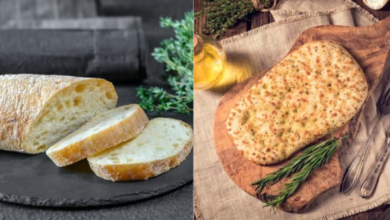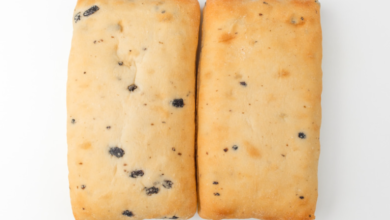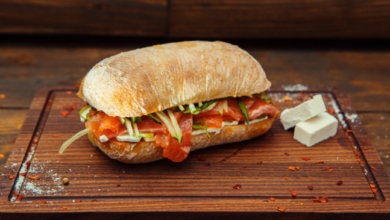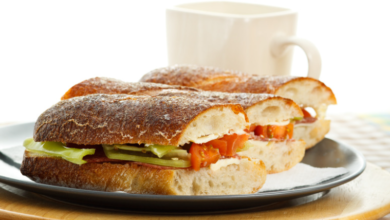Is Ciabatta Really Crusty?
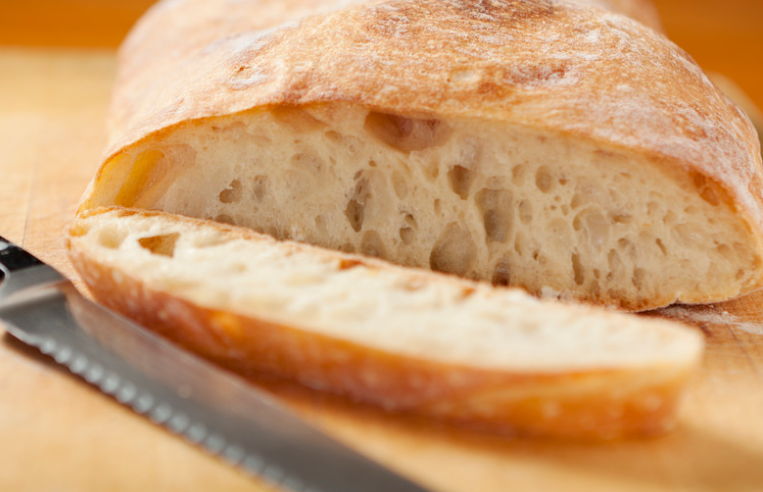
What To Know
- The crust’s crispiness is further enhanced by the Maillard reaction, which occurs when sugars and proteins in the dough caramelize during baking, creating a golden-brown color and a slightly sweet flavor.
- This variation has a very crispy crust, achieved by using a high hydration level, baking at a high temperature, and injecting steam during baking.
- This variation has a rustic, irregular crust, achieved by using a sourdough starter and baking in a Dutch oven or on a baking stone.
Ciabatta, renowned for its distinctive airy interior and rustic crust, has captivated bread enthusiasts worldwide. But the question lingers: is ciabatta crusty? The answer lies within the unique dough composition and baking techniques that give this Italian bread its signature texture.
The Science Behind Ciabatta’s Crustiness
Ciabatta’s crustiness stems from the combination of a high hydration dough and a specific baking process. The dough, made with a high proportion of water to flour, creates a slack and wet mixture. This slack dough allows for the formation of large air pockets, resulting in the bread’s characteristic airy interior.
During baking, the dough’s high moisture content evaporates, creating steam within the bread. This steam expands and pushes against the dough’s surface, causing it to rise and form a thin, crispy crust. The crust’s crispiness is further enhanced by the Maillard reaction, which occurs when sugars and proteins in the dough caramelize during baking, creating a golden-brown color and a slightly sweet flavor.
Factors Influencing Ciabatta’s Crustiness
Several factors can influence the crustiness of ciabatta, including:
- Hydration Level: A higher hydration level results in a more crusty bread.
- Baking Temperature: Higher baking temperatures promote a crispier crust.
- Steam Injection: Adding steam to the oven during baking helps to create a more pronounced crust.
- Baking Time: Longer baking times allow for more moisture to evaporate, resulting in a crispier crust.
- Dough Handling: Careful dough handling, including shaping and scoring, can affect the crust’s evenness and texture.
Benefits of a Crusty Ciabatta
The crusty texture of ciabatta offers several benefits:
- Enhanced Flavor: The crust’s crispy exterior adds a satisfying crunch and a slightly sweet flavor to the bread.
- Improved Structure: The crust helps to support the bread’s airy interior, preventing it from collapsing.
- Extended Shelf Life: A crispy crust helps to seal in moisture, extending the bread’s shelf life.
- Versatility: Ciabatta’s crusty exterior makes it ideal for sandwiches, bruschetta, and other culinary creations.
How to Achieve a Crusty Ciabatta
To achieve a crusty ciabatta, follow these tips:
- Use a High Hydration Dough: Aim for a hydration level of 75-80% (75-80 grams of water for every 100 grams of flour).
- Bake at a High Temperature: Bake the ciabatta at a temperature of 450-500°F (230-260°C).
- Inject Steam: Add steam to the oven during the first 10-15 minutes of baking.
- Bake for an Extended Time: Bake the ciabatta for 30-40 minutes, or until the crust is golden brown and crispy.
- Handle the Dough Carefully: Shape the dough gently and score it lightly to promote even expansion.
Variations on Ciabatta Crustiness
While ciabatta is typically known for its crusty exterior, there are variations in crustiness depending on the specific recipe and baking techniques used. Some variations include:
- Soft Crust Ciabatta: This variation has a slightly softer crust, achieved by using a lower hydration level or baking at a lower temperature.
- Crispy Crust Ciabatta: This variation has a very crispy crust, achieved by using a high hydration level, baking at a high temperature, and injecting steam during baking.
- Rustic Crust Ciabatta: This variation has a rustic, irregular crust, achieved by using a sourdough starter and baking in a Dutch oven or on a baking stone.
Pairing Ciabatta with Different Dishes
Ciabatta’s crusty texture makes it a versatile bread that can be paired with a wide range of dishes:
- Sandwiches: Ciabatta’s crusty exterior and airy interior make it the perfect bread for hearty sandwiches.
- Bruschetta: The crispy crust of ciabatta provides a sturdy base for bruschetta toppings, such as tomatoes, basil, and garlic.
- Salads: Ciabatta cubes can add a crispy texture and a touch of flavor to salads.
- Soups: Ciabatta’s crusty exterior can be used to soak up delicious soups and stews.
- Appetizers: Ciabatta slices can be served as appetizers with dips, spreads, or cheese.
The Enduring Appeal of Ciabatta’s Crustiness
Ciabatta’s crusty texture has made it a beloved bread around the world. Its crispy exterior, airy interior, and versatility make it a perfect choice for a variety of culinary creations. Whether you enjoy it as a sandwich, bruschetta, or simply paired with your favorite soup, ciabatta’s crusty character is sure to delight your taste buds.
Frequently Discussed Topics
Q: Why is my ciabatta not crusty?
A: Your ciabatta may not be crusty due to factors such as insufficient hydration, low baking temperature, or inadequate baking time.
Q: How can I make my ciabatta extra crispy?
A: To achieve an extra crispy crust, use a high hydration level, bake at a high temperature, and inject steam during baking.
Q: Is ciabatta crusty when fresh?
A: Yes, freshly baked ciabatta typically has a crusty exterior. However, the crust may soften slightly over time.
